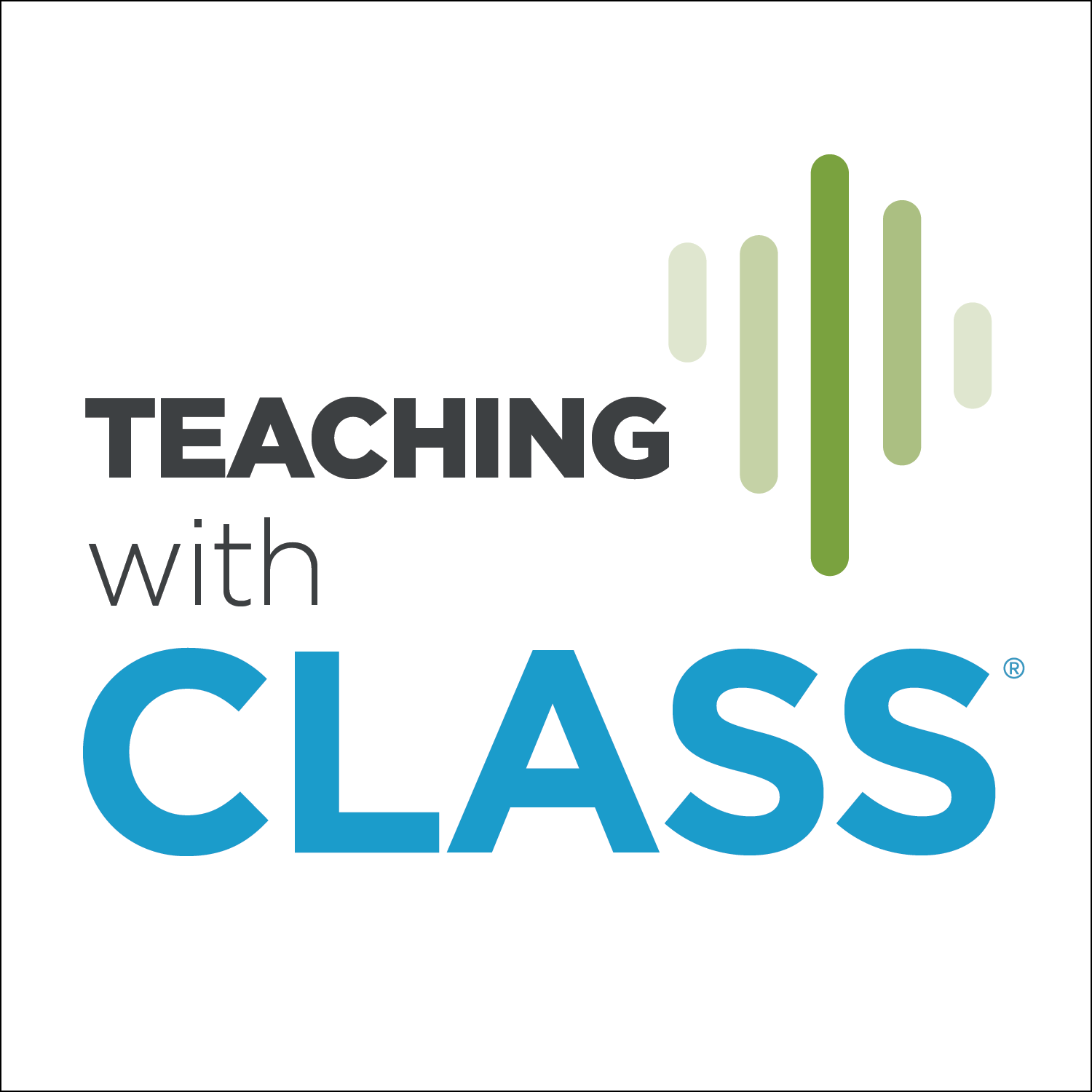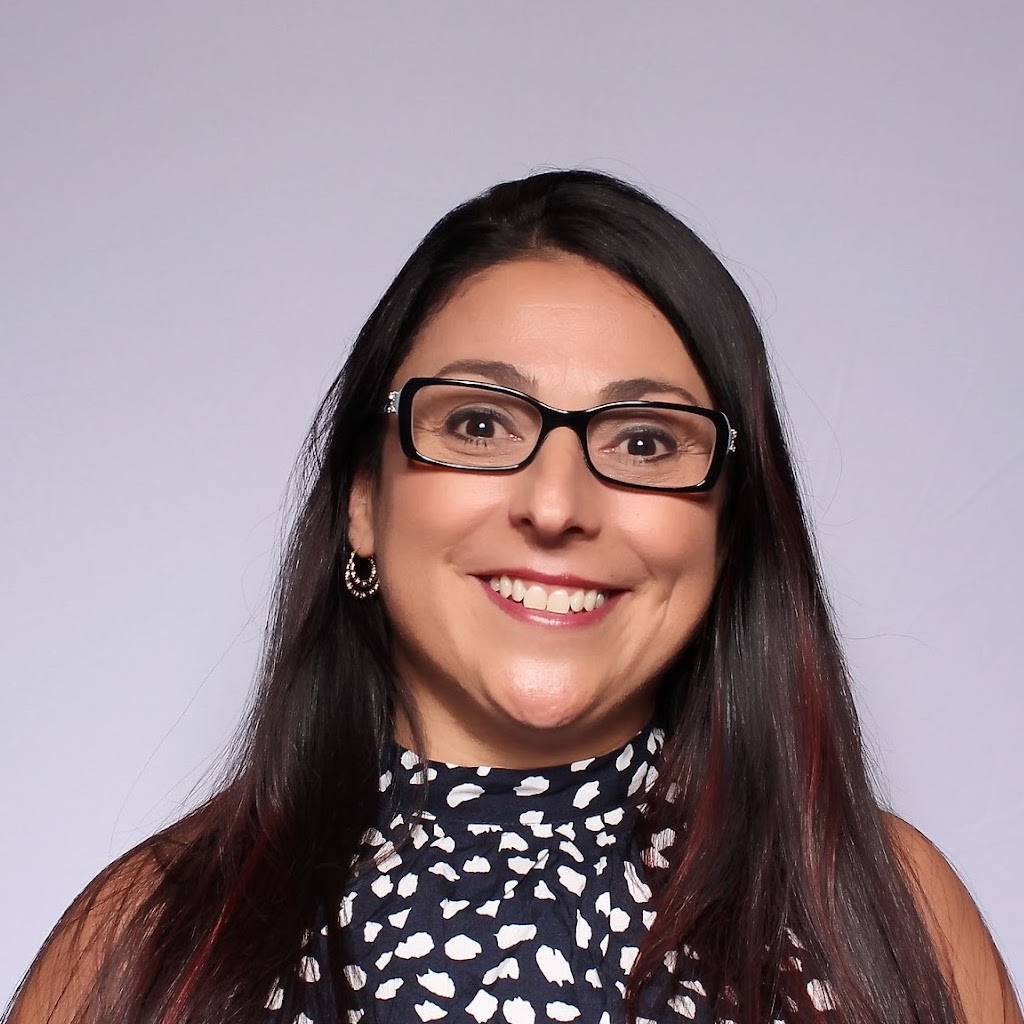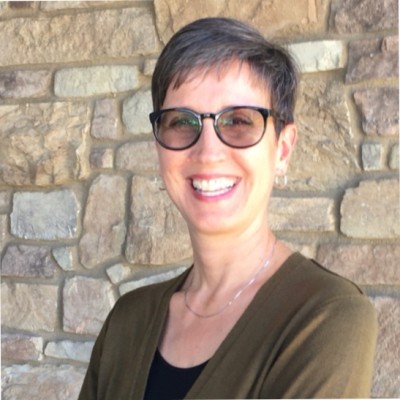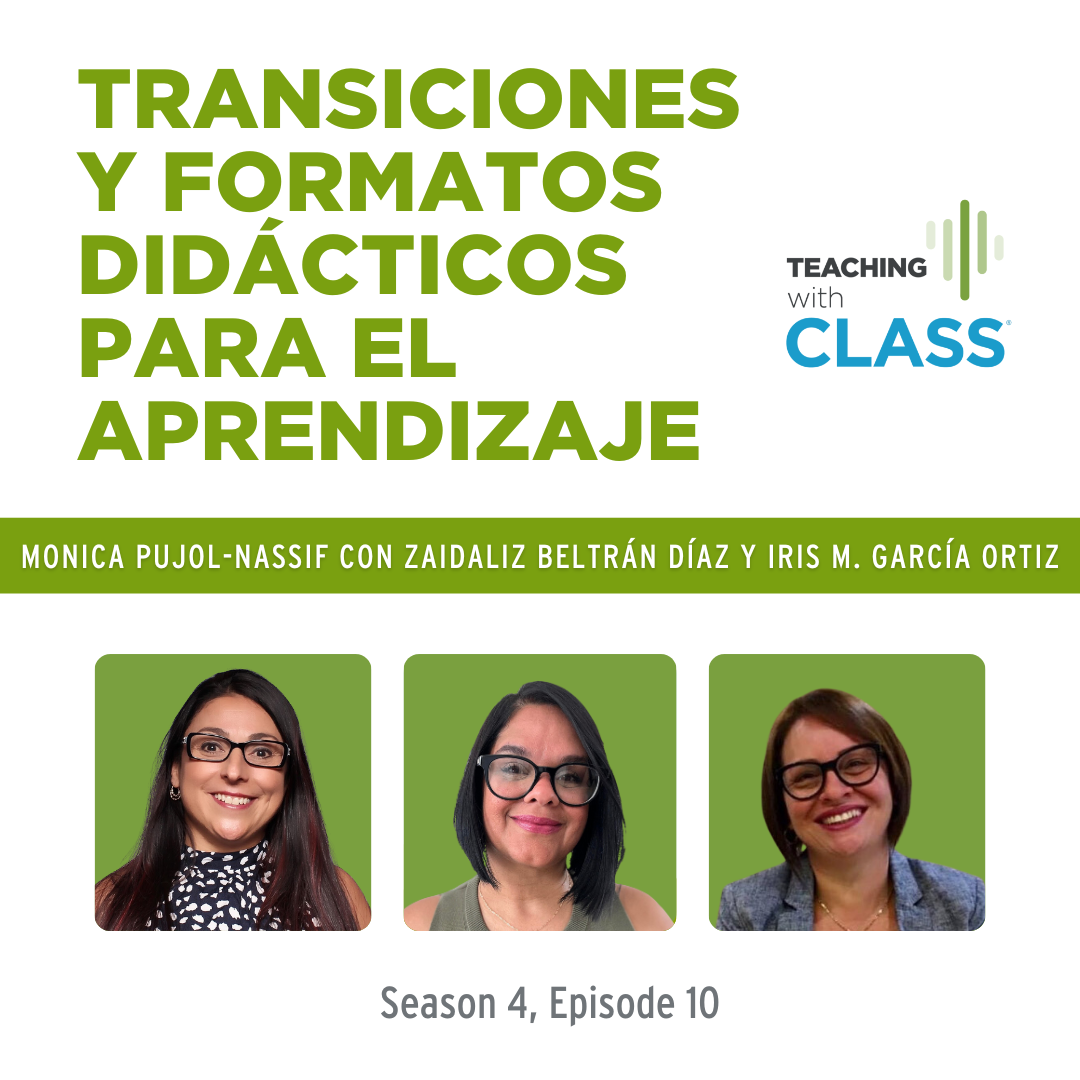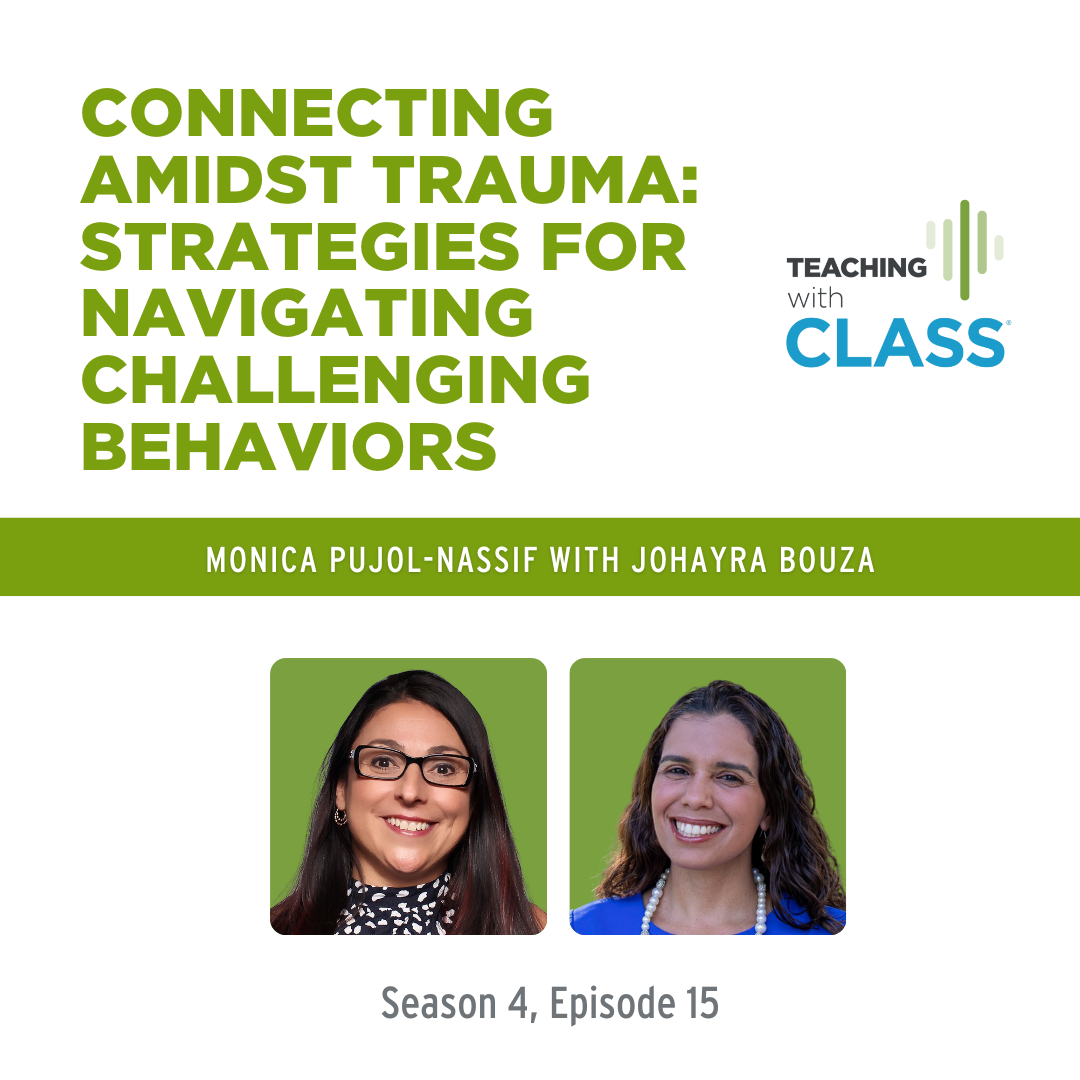Episode Transcript
Kate: Hi everyone, and welcome to the Teaching with CLASS podcast, the podcast that gives you quick, actionable tips to easily implement in your classroom. I’m your host, Kate Cline.
In today’s episode, we’re going to be talking about meeting the needs of every child in your classroom. It’s a big job and a very important one. How do we ensure that our classroom is a place where all children are welcomed, valued, and supported? And how can we get help when we or the children need it?
Today, we are joined by Jill Cook, an educator with over 30 years of experience in the field. She’s been a classroom teacher, a family health care provider, a preschool administrator, and now works as a diagnostician in the public school system here in Texas.
Other fun thing about this conversation is that Jill is also my very good friend. We started teaching together in the same school 30-some years ago. I’m really excited to have Jill join us today for this conversation because she can offer so many things to guide us as we try to meet every child’s needs. Let’s get started.
Hi, Jill.
Jill: Hello.
Kate: I'm so excited to have this conversation with you today, my friend of forever, educator, administrator, diagnostician extraordinaire. It’s going to be a lot of fun.
Jill. It is going to be fun.
Kate: All right. We're talking today about really meeting every child's needs. We always start with a story. How do you personally connect to this topic of, why it's important to meet every child's needs? Tell us the story.
Jill: I think it comes back to a time when I was a classroom teacher. In a classroom setting, when you walk in and you're just so excited the first day of school, you're going to change the world. You've got all these little kids, and you're going to change them. Then you find out some of them are a little difficult than others, and it's harder to change them. You need a lot of help to get that done.
Sometimes it does take a community, not just one person in the classroom to do that, but I've been there. I've been in that same position that some of these brand new teachers are in or teachers that just have had groups of kids that haven't fallen into that category of needing extra support that's above and beyond what they can give within the classroom setting.
Kate: Yeah, so like I've been there, done that. Here and ready to help. Okay, awesome. Introduce yourself. Tell us about you, your background, and what you want us to know about yourself.
Jill: Years ago, I graduated from the University of Northern Colorado back in Colorado. I immediately took a teaching job in Texas. I have been in Texas ever since, but my work in early childhood has taken me in a lot of different directions.
I did start as a classroom teacher in one of the larger school districts in Texas, and then moved into a position where I was a certified in-home child care provider. That allowed me to stay home with some of my young kids at that time, and then a job fell in my lap that allowed me to be a director of a small preschool.
I did have the opportunity to do a lot of onboarding and training for new teachers working with children between the ages of 18 months and 4 years. After that, I did take another position back in a public school setting, where I did work primarily with kindergarten and pre-K students.
After that, I decided to go back and get my master's to become a certified diagnostician. I have played a lot of different roles in the world of education, but I feel that I have stayed true to my passion of working with young kids. I've always been around the early childhood student.
Kate: I remember, when you were wanting to find that next step in your career and you were deciding between do I want to be a special ed teacher, do I want to be a diagnostician, and you were trying to figure out what was the right direction to go, this particular need was really speaking to your heart. Anything you want to say about that big shift that you made?
Jill: I think one of the main reasons I made the big shift is as a preschool teacher, you're the first ones that get these kiddos into your classroom. You're dealing with students who maybe are coming from a traumatic background, maybe are coming from a background with some sort of a speech delay, maybe are coming from a background with some significant academic deficits, just not up to par academically, not picking up skills, a developmental delay of some sort. Sometimes we're the first ones to approach the parent with our concern.
A lot of times, I felt like I didn't have the answer. Parents would come back at me with a question why. Why aren't they acting like the other kids? Why aren't they making the progress other students are making? I felt as a classroom teacher, I didn't always have the right answer, or I didn't always have all the information to provide them. Moving into a position of a diagnostician (I feel) has allowed me to gain more knowledge that I can share with parents, and in turn work more closely with them in helping their own child.
Kate: We've got all these different perspectives that you're bringing today to this conversation. What is it we want to cover in this conversation? We really want to talk about, from the educator perspective, like you just said, I've got all these kids in my classroom, what do I do now? How do I make sure that everybody's getting their needs met? Maybe I can do that, maybe I need to reach out for some help. We're going to talk about that thing. What do I want to notice? What do I want to keep track of? How do I reach out for help? What do we expect?And those kinds of things.
I'm going to just offer this caveat. We're going to avoid specifics, like reach out to this specific person or that specific role, because we know every right program and system is a little bit different, but we can offer some general guidance about that. Anyone listening should figure out, who's the person who does that thing where I work, that I could reach out to?
In addition to avoiding those specific technical things, are there any other things you might think might come up, technical terms or words that we want to try to bring up now that we can try to define for people?
Jill: I think there's just a lot of special education lingo when we start getting further into some of our conversation about now, what do we do if that student doesn't look as if they are progressing like their peers, and reaching out for assistance through possibly looking at the special education realm of it. There are a lot of acronyms, but I'll try not to speak in acronyms.
Kate: We'll try to avoid the alphabet soup and define them. If we run into them, we'll define them. Awesome. Let's jump in. Let's imagine, you and I, we started in our classrooms 30-something years ago at the same school, and we can identify with educators that are getting ready to welcome their new class of students this year. We want to think about with them, what are some ways that we can get everything going to set everybody up for success? What are some basic building blocks for meeting children's needs? What's basically good for all kids?
Jill: Oh, my goodness.
Kate: That's a big one, isn’t it?
Jill: That’s a big question. Really, with the younger ones coming in, I think one of the main points to keep in the back of your mind as you're entering your new classroom is setting up a sense of community with those children. I think if you are setting up that community, showing the children respect, being fair and consistent, in return you are going to receive respect back from them.
I think children need to understand from day one what your boundaries are. We all know how kids will push. I think that's part of that setting up your community. Kids are going to know from the very start, am I going to feel safe in this environment? If I push, how far am I going to go? They're going to know, I can keep pushing, pushing, and pushing. Or they're going to know, oh, I can push this far, and then the teacher is going to set that rule and stick to it.
I think there's just a lot of setting those appropriate boundaries for kids, because if they don't feel that sense of security or safety in their environment, they can't take in the knowledge that you're providing as well.
Kate: So we need to decide ahead of time if we have boundaries and how we relate to each other, what's okay and what's not okay, how we get along with each other, and then maybe some thoughts about that. How do I decide what those are in my classroom? What do I pull from think about those things?
Jill: Pull from your early childhood development information. Should early childhood classroom be silent? Absolutely not. That would be hard, so your boundary can't be or set that rule of, oh, no talking. We need to communicate. We need to enhance those speaking skills in young children. We need to provide a very language-rich environment, and we all know that. I guess it's determining at what level of volume you're comfortable with as a teacher.
Also, knowing that those social interactions between kids aren't always positive. What you have, I want. What you're doing, I want to do. They're going to invade each other's space. They're going to cause conflict with each other because that's what young children do. And understanding that, knowing what is my boundary. When am I going to step in and facilitate that conversation? And when am I going to stand back and allow them to try and solve it?
Just really behavior management. What am I comfortable with in that realm of my knowledge for early childhood development with creating that safe space, where kids can learn and grow, but do it in a way that is not chaotic?
Kate: We want to set clear expectations for behavior, how we're going to keep track of that, and foster it, model it, follow-up about it, all those things. We might also have some expectations for where things go and how we do things around here. That's all that part of sense of community.
I've said all those things, I got my kids, we're doing stuff, and I'm noticing, like you said, there are things that happen. They're just learning. I've got a repeat things. Especially in the beginning of the year, I'm going to repeat stuff all the time. We're having some conflict because we are just learning the rules and how we do things.
I'm managing those things. I'm reminding, I'm redirecting, I'm modeling, I'm doing all that stuff. When should I start to worry about a child not figuring it out? Or something's happening, I'm starting to have a feeling like this is something to worry about?
Jill: I think something that teachers really need to pay attention to is how often that behavior or that they're not learning, how often is that happening? Then the duration. How long does it take for them to be able to come back down? I have one that's tantruming. Is this a regular transitional period for that student?
I think teachers need to be very aware and start tracking certain behaviors and certain aspects of what they're concerned about. Simply just watching to see how often is it occurring, how long does it take for them to be able to self-regulate, or even if they can't self-regulate, how much intervention is needed so that they can calm down.
Also, the intensity. Is the intensity decreasing? Then perhaps you're doing the right thing. You're providing that emotional support. You're providing the words to say, you're providing the modeling and the skills, and now they're starting to implement that themselves. They're using these skills, so they're working through these emotional aspects of starting school, transitioning, sharing with all these other kids, and those types of things.
Kate: Right. I'm not the only one, I'm part of the group.
Jill: Oh my gosh, there are 19 kids in this classroom with two adults. I'm used to me at home with mom.
Kate: Exactly.
Jill: Just watching, is this going to be something that this student is going to be able to take the skills that you're providing them and manage in this environment, or is the intensity increasing? Is the duration of it getting longer? Is the frequency? Are they now tantruming three and four times a day when they were only tantruming two or three times a week? I think to understand which direction these kids are moving, data is so important to collect.
Kate: How do I do that? I want to make sure I'm collecting good data and useful information that will be helpful in the long run. What should that look like?
Jill: It can be super simple. There are going to be people on your campus or at your school that are going to have all kinds of behavior tracking charts. There are lots of simple ways to be able to track different types of behavior. It does not have to be difficult. It can be super quick, as quick as a tally mark.
On a simple chart, you might want to pick two or three behaviors that you're concerned about. You may even only have one behavior you're concerned about, and that's all you're tracking. Think about, what is that one behavior I see that I'm concerned about, that doesn't seem to be going away after they've transitioned into a new setting or seems to be continually be getting progressively more intense, more frequent, lasting longer? Simply just tracking, how many times this is happening a day or per week with a tally mark.
Kate: You mentioned also children who have language or learning challenges in that progress also. How do I keep track of those things?
Jill: Reach out to possibly a speech and language pathologist that's on your campus, in your school, or contracts with your school. They've got a wealth of information about articulation sounds that are appropriate or not appropriate. Expressive language information. Is this expressive language a deficit for the student?
You ask a what question and they answer it with a why. Are they not truly understanding me, or do they just throw out words? That expressive language. Even the receptive language. I'm asking you to do this over and over, and you don't seem to understand what I'm asking. Are they not receiving the information properly?
Kate: Maybe they have a different first language. That's not right. We have to figure that out first. That might be impeding their receptive ability.
Jill: That would certainly be a language difference, not a language deficit. Yes, absolutely. First, determine is this a language difference? How often are they exposed to the English language as opposed to another language? If you've determined it's not a language difference, then you need to start looking into, is it a language deficit?
Sometimes simple conversations with a parent. Contacting the parent and finding out, hey, how much English are they exposed to at home? But then when you realize, oh, this might be a language deficit, simple questions might be, you give a parent an example of what you're concerned about.
Take anecdotal notes and share that story with the parent. Hey, when I asked your child this question, here's the response I got. The response isn't always matching the question. Do you hear this at home?
Kate: Can you give me a concrete example of something like that? I asked one question and they answered it with a completely like, that's not the way I would have expected that person.
Jill: After reading a simple story, what was the dog's name? Do you remember the name of the dog? The student says, the blue house, I go to. We just sat side-by-side and read this story that every page had the dog. The dog's name was Buster.
You reword it, you ask them again, and you show them a picture. Remember here, here's the dog we saw when we were reading the story. Remember, the dog had a name. What's the dog's name? They might answer, I go park. They're just not making a connection. All your interactions day by day, you're going to realize whether kids are connecting with what you're doing or not.
Kate: Yeah, you need to look out for that. You mentioned talking to parents. From the diagnostician perspective and also you're a parent, a teacher, and all those things, what are things that are helpful to say or ask? And what are things that you're like, please, don't say these things when you're talking to a parent?
Jill: From the teacher point of view, of course, anytime you have a concern about a child's development, it's always good to call a parent, share some of those concrete examples, just the fact. You're sharing the fact.
If it's behavior, those are tough conversations to have sometimes with those parents. It's much easier if you've written out anecdotal records, you keep your own emotion out, and it's simply the fact. That's what you want to share as a teacher.
From the diagnostician point of view, the waters get a little muddy if a teacher has mentioned a possible diagnosis such as, wow, your child has a really hard time being still. They can't sit for 30 seconds while I'm reading a story. Have you ever considered ADHD? As a teacher, even as a diagnostician, nobody in the school district in the state of Texas can diagnose ADHD. That is a doctor's diagnosis.
Using those words that indicate a diagnosis, like attention deficit disorder or even something like, well, I think maybe they should be getting speech therapy. A teacher can't make that determination. A teacher can certainly say, here's some of the questions I've asked and here are the answers I get, or they can say to a parent, I find that I am constantly having to ask your child to repeat things because I can't understand what they say.
Do you find that other people outside of your family do the same? You can have those conversations to find out, is this something that is happening between school and home? Have parents ever been alerted to this before and are they concerned about it?
Kate: That's a good point about people outside of the regular people this child interacts with, because we get very used to the way things are. We don't always recognize, oh, this might be a little outside of the typical.
If I want to be a really good teammate for this child, getting the support they need, I've kept some good data, I've had a very careful conversation with the family, who else am I reaching out to to try to get some support for this child?
Jill: When you realize that you've got some of that data that indicates that this child is not quite on the path of their peers, and there are some concerns whether it's academic, language, or behavior, the next step would really be to reach out to the person who does those referral meeting, a meeting about next steps for that student, a meeting that would help determine whether that particular student might benefit from a special education evaluation.
Every school, every campus should have a team of people that come together. As a diagnostician, I find that I have to be very separate from that team at first. That team is the one that is going to be asking the teachers for the data, not the actual assessment people.
The reason being is when you're in that referral process, looking at that possibility of moving forward with special education, the evaluators have to take a step back for a moment because we can't predetermine any type of a disability. When you're in that process, you are going to your general education designated person and providing them with all the data that they know will help facilitate a good referral.
Kate: They might ask you to capture other data. They might come and observe in your classroom or something like that. Let's just say an observation is part of the referral process. Part of me wants everything that ever happens to happen when that observation happens so that somebody can see what I'm dealing with every day, but it's unethical to harass a child. It's not right to do that. What do I do?
Jill: Let me back up just a minute before we go into what to do, because the observations for the referrals are going to come from the teacher desk, because that's prior to an assessment person getting involved in the process.
Those observations are going to be very anecdotal, just simple things that the teacher needs to jot down throughout the day. Keeping in mind to also jot down what happened right before the behavior occurred and then what happened right after. That antecedent, the behavior, and then the consequence, those A, B, C charts that are out there that you can google and find. They help facilitate and make it easier to capture that data.
The teacher's information is going to be shared at the referral meeting. In the referral meeting, there will be assessment personnel. Then the assessment personnel look over all the data, question the teachers about the data, and they determine if the assessment is going to move forward or not for special education.
When a special educator has gained consent from a parent, is able to go in, and start the evaluation with that student, that's when they will go into the classroom to do those observations. When an assessment personnel comes into the classroom, it needs to be as natural as possible.
We like to be the fly on the wall. We're not going to let the student know we're there to watch them. If kids ask me, what are you doing here, my response is always, I'm checking out what happens in a pre-K classroom today. I’m not, I'm observing Johnny. You never want that student to know you are there to observe them, because then the student acts differently. You just want to see a natural day.
As assessment personnel, we all know we might not see the behaviors that are documented. That's why that data is so important, because if this is a student who's having tantrums three, four, or five times a day that's lasting 25 minutes each for the most of their day, they're tantruming, and then that one hour window, we go to observe and they don't tantrum. We've got all this data to prove that, yes, it does happen, even though we did not see it in that one hour window of time.
Kate: Okay, awesome. So I have to make sure the data that I'm gathering is objective and it's just like you're saying, the facts, what happened. What was the situation? The request was to line up or something like that, then this happened, and then the consequence was that. Okay.
The time is going so fast. Here's the reality, though. Like you said, there are 19 kids in the class, and it feels like more and more of those children need something extra and some kind of support of a wide variety of things. That can feel very daunting as an educator. I've got 10 of my 19 kids have something going on.
Anything that you can offer about not getting discouraged, that you're doing the right thing trying to meet everybody's needs, and how we come back to that each day? Educators care so much. What are your thoughts about that?
Jill: First of all, as an educator, give yourself some grace. Understand that some of these behaviors are not because of you. The children are bringing their own background to the classroom, and some of them just have had traumatic background.
We might not understand that, so sometimes we think, oh, no, this is because of me. I'm initiating all this in the classroom, and it's causing this child to behave like that. No, it's not because of you, and they are not doing it to hurt you or towards you. This is how they can react, and they don't know how else to react. Understand that. Don't take it personal. It's not you. Take that whole emotion out of it as making it personal.
The other thing I'd like to remind everybody is we have a large community of peers, and we all have our separate areas of expertise. Go have thoughtful conversations with the other educators that you surround yourself with. One person in the classroom is not going to have all the answers for a variety of different behaviors. Go speak to the specialist who deals with behavior.
The counselor, the AP, or whoever it is on your campus, get ideas. Try something new, because if what you're doing day after day isn't helping the student, it's not helping you. Go have that thoughtful conversation. Accept that help. Put in place some of their advice.
Kate: Try it out for sure. I sure hope that we covered so many different things. We're wrapping it up. I just want to finish up the conversation. Maybe you already said this as you were offering your other thoughts. I always ask our guests at the end, if you could connect with any educator out there from your heart to their heart, what kind of encouragement would you offer?
Jill: One thing I think that always comes to mind is grace. Give yourself grace. Second of all, always put the student first. We know that. I think we get caught up with all the other stuff about being a teacher, and we forget that what we truly need to focus on is the student. We are in the field of education, hopefully, because it is your passion. It is not just a job, it is who you are. Remember that.
Kate: That's so beautiful because that's where you started. You said no matter where I've been, in all the different roles, it's always been about the children. That's awesome. Thank you so much for joining me today and having this conversation.
Jill: It's been a pleasure. Thanks for having me.
Kate: Wow. We really covered a lot of ground in that conversation, really thinking about how to set up the classroom, our expectations about behavior and how we do things in the classroom so we build a community and make our classroom a place where all children are welcome. And then how we keep track of things when we feel like a particular might need extra support, how do we engage with that team that will held determine what the child needs.
We covered a lot of things today. I hope you also are keeping close to your heart Jill’s encouragement about giving yourself some grace. Remember, thriving educators create environments where children can thrive. So please, take care of yourself because what you do matters.
You can find today’s episode and the transcript on our website, teachstone.com/podcasts.
